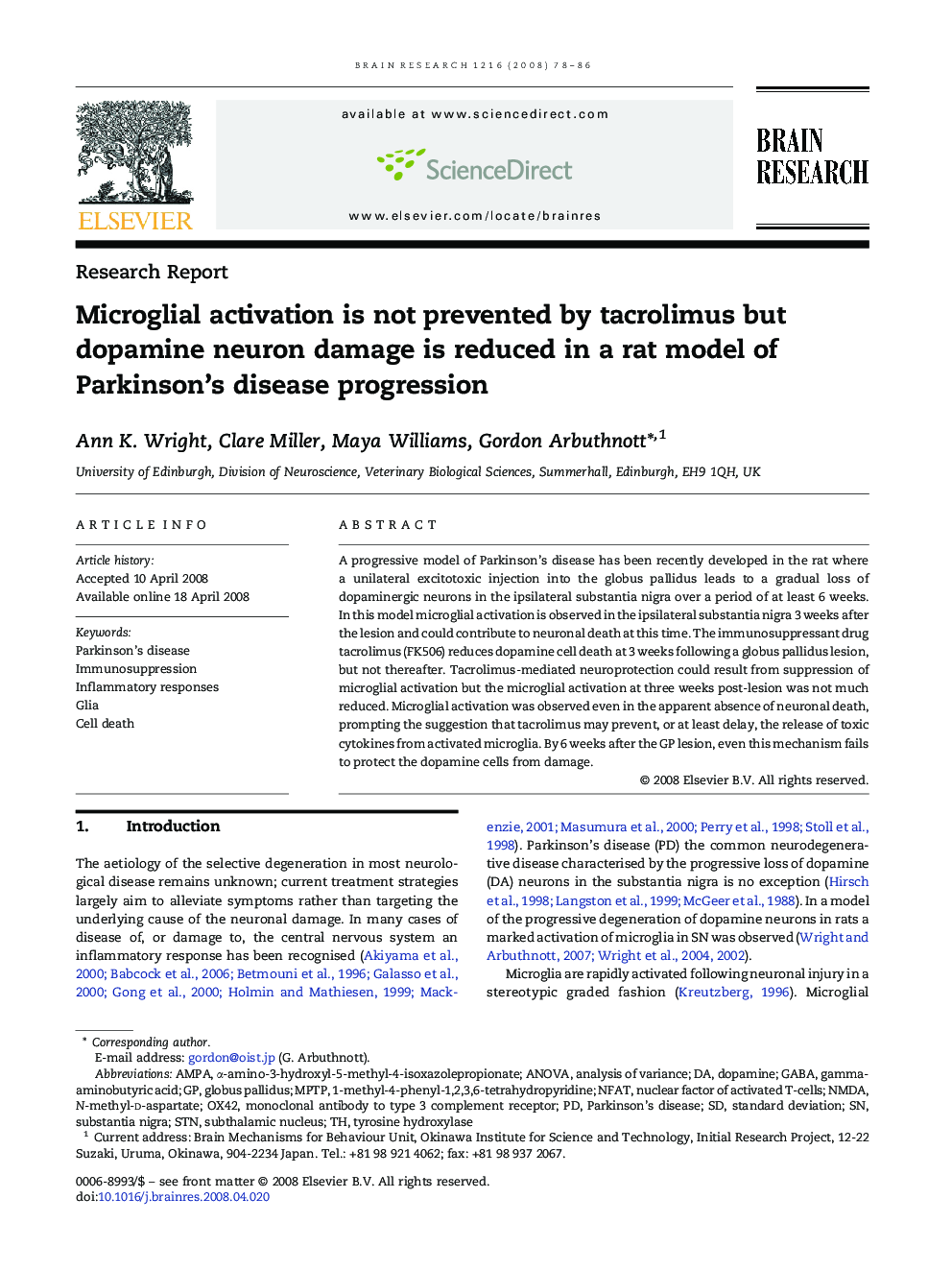| Article ID | Journal | Published Year | Pages | File Type |
|---|---|---|---|---|
| 4329732 | Brain Research | 2008 | 9 Pages |
A progressive model of Parkinson's disease has been recently developed in the rat where a unilateral excitotoxic injection into the globus pallidus leads to a gradual loss of dopaminergic neurons in the ipsilateral substantia nigra over a period of at least 6 weeks. In this model microglial activation is observed in the ipsilateral substantia nigra 3 weeks after the lesion and could contribute to neuronal death at this time. The immunosuppressant drug tacrolimus (FK506) reduces dopamine cell death at 3 weeks following a globus pallidus lesion, but not thereafter. Tacrolimus-mediated neuroprotection could result from suppression of microglial activation but the microglial activation at three weeks post-lesion was not much reduced. Microglial activation was observed even in the apparent absence of neuronal death, prompting the suggestion that tacrolimus may prevent, or at least delay, the release of toxic cytokines from activated microglia. By 6 weeks after the GP lesion, even this mechanism fails to protect the dopamine cells from damage.
